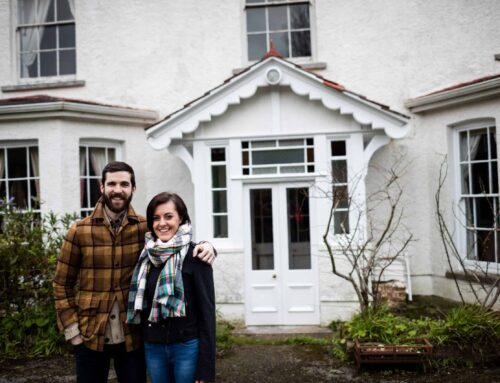The Costs of Buying a Home in San Francisco: What to Expect
Acquiring a residence in San Francisco signifies a momentous achievement, but it also entails a serious monetary outlay. The thrill of becoming a property owner here is certainly palpable, but grasping the complete picture of the financial demands tied to this venture is crucial, too. This demands an understanding not just of the variety of ways to pull together the necessary up-front capital (ranging from the appalling to the creative), but also the knowledge of some range of figures that the experience might entail once you’re actually living it. Here are some key points to consider.
Overview: Understanding the Costs of Home Buying in San Francisco
San Francisco’s housing market is among the most cutthroat in the U.S., driving up the costs of homes and the expenses that come with trying to buy one. The city’s intense demand and tight supply would seem to be a formula for sticker shock, but the reality is even worse. Those who are dumb or desperate enough to try to buy a house must contend with a seemingly bottomless well of additional expenses that pile on top of the already exorbitant prices.
All the expenses involved in buying a home in San Francisco will be broken down in this section.
-
Home Price Overview in San Francisco
The prices of homes in San Francisco can vary dramatically according to the nature of the property and its whereabouts. In early 2025, the median price for a single-family home in the city of San Francisco is pegged at about $1.8 million, while the average price for a condominium is around $1.1 million.
Costly Locals: Places such as Pacific Heights, Nob Hill, and Sea Cliff almost always rank among the most pricey parts of the city, with costs for homes well above the average.
In contrast, there are places like Bayview, Excelsior, and parts of Outer Richmond that still offer comparatively affordable housing, but even these prices have been going up, as the kinds of people who can afford more and more have been seeking to live in places that are not quite as central but still offer a good amount of what makes San Francisco a great place to live.
Buyers need to factor into their budget the fact that the imbalance between supply and demand, coupled with the high desirability of San Francisco, is still pushing home prices up.
-
Down Payments: What You Need to Save
In San Francisco, a typical requirement for a down payment is 20% of the home’s purchase price. For a home that costs $1.8 million, that amounts to $360,000. But first-time homebuyers and people buying lower-priced homes can sometimes get help that allows them to pay a smaller down payment.
FHA Loans: The Federal Housing Administration (FHA) governs loans that require as little as 3.5% down for qualified buyers. One significant aspect of these loans is that they have very particular requirements, which, combined with certain limits that are placed on the amount of the loan, can make them unsuitable for expensive real estate in San Francisco.
First-Time Homebuyer Programs: California has programs for first-time buyers that may make it easier to save for a down payment. They include down payment assistance and reduced mortgage rates.
If you want to successfully manage a down payment in a city with sky-high housing costs, then planning is key. Save early, and set aside funds consistently; this will get you to your down payment goal despite the lack of financial ease that makes it feel doable.
-
Closing Costs: What to Expect
When you buy a home, there are additional upfront costs beyond the home’s purchase price. These are called closing costs, and they typically run from 2% to 5% of the price of the home you’re buying. For the $1.8 million home we selected, closing costs could range from $36,000 to $90,000.
Frequent concluding costs include:
Insurance for the title: It protects the buyer and the lender if there are any legal problems with the title to the property.
- Fees for Escrow: Escrow accounts are used to hold transaction assets while the parties complete their obligations. The use of an escrow account may cost the parties to the transaction some fees. These can be fairly straightforward, or might get rather complicated. Your escrow officer (usually working with the title company) should be able to explain them to you. More simply put, the escrow officer has a duty to serve; but in that service are costs. Not that costs and fees are often easy to understand. Because they are not, I’m going to do my best to make them understandable.
- Charges for Inspections: Inspections are necessary to pinpoint any problems with the house, and the costs vary based on the kind and extent of the inspection.
An appraisal is required to find out how much the property is worth, a necessity for obtaining a mortgage.
An agent for buyers with experience can help you figure out these costs and take you through the closing process without any surprises.
-
Property Taxes and Other Ongoing Costs
San Francisco’s property taxes rank among the highest in California. They typically hover around 1.2 percent of a property’s assessed value, although this does vary by neighborhood and with additional assessments. If you own a home assessed at $1.8 million, for instance, your approximately $21,600 annual tax bill would be due at the rate of 1.2 percent.
Besides property taxes, you need to think about ongoing costs like the following:
- Householder’s Insurance: Safeguarding your domicile and possessions against harm and against loss is of utmost importance. The price of householder’s insurance shows a wide latitude because it depends on many factors related to a particular property, but a reliable amount to use for estimating annual premiums ranges from around $500 up to around a high limit of $2,000.
- Association of Homeowners Fees: If you buy a condo or a house in a community with shared amenities, you might have to pay fees to an association of homeowners. These fees vary a lot depending on the property and can run anywhere from $100 to $1,000 a month.
- Utilities: Your budget must also accommodate the ongoing costs of gas, water, electricity, and internet.
Grasping the nature of these continuous costs is essential for keeping the San Francisco real estate market reasonably affordable over the long haul.
-
Home Inspections, Appraisals, and Other Pre-Purchase Expenses
You will need to pay for several inspections before the closing of a house to determine the condition and worth of the property. Inspections that are done with frequency include:
Home Inspection General: This looks at the property in its entirety. It looks at the condition of the foundation, roof, plumbing, electrical and all sorts of things in between. It looks at how all those things work individually and together.
Common in older homes, this inspection checks for termite damage or infestations. Termite Inspection.
- Assessment: When a loan is involved, the lender usually requires an assessment of the property. This is done to ensure that the collateral is worth the loan amount. If the collateral is not worth the loan amount, the lender requires that the terms of the loan be altered or that some other arrangement be made.
Although the average price of an inspection falls between $300 and $1,000, the inspection is worth it when you consider the alternative—unexpected expenses that pop up after you make the purchase. In rare instances, sellers may agree to cover the cost of the inspection, especially if it seems likely that the negotiation will lead to a sale.
-
Private Mortgage Insurance (PMI)
If your down payment is less than 20%, you will almost certainly be required to pay for something called Private Mortgage Insurance (PMI). Protecting the lender in case of default, PMI is an add-on cost that pays for part of the mortgage amount not covered by the down payment.
- Expense of PMI: PMI generally costs from 0.3% to 1.5% of the starting loan sum each year.
- Steering clear of PMI: Steering clear of PMI can be done in a couple of ways. One is saving for a considerable down payment, so you don’t need to pay the insurance. If you already have a mortgage and you’re paying PMI, look into refinancing when your equity in the property is substantial enough to make it happen. You may save in the long run by doing this.
-
The Costs of Moving and Settling In
After buying a house, there are more expenses incurred in the process of relocating and determining. These might involve:
- Expenses Related to Moving: The costs of using professional movers, renting a truck, or buying boxes and tape can mount rapidly.
- Equipping Your New Home: Purchasing items like furniture and decor is an easy-to-overlook “new new home” cost. But it’s a prerequisite if you want the place to feel like home and not just a large box in which you sleep, eat, and occasionally work.
- Setting Up Utilities: Getting your electricity, gas, water, internet, and cable service set up can incur activation fees that add up fast. These payments can certainly vary depending on your situation—for example, whether you’re moving into a new construction or an existing home—but it’s really important to consider them in your overall budget so that you’re not financially pushing everything to the limit.
Purchasing a house in San Francisco is a major financial undertaking, and the expenses associated with it go well beyond the price of the house itself. By comprehending the immediate and continual costs—like down payments, closing costs, property taxes, and insurance—you can set up a budget that gives you more clarity about what’s possible in the current market and, hopefully, leads to a more informed decision about whether to buy now or later.
If you’re eager to learn the total expense involved in purchasing a house in San Francisco, don’t hesitate to reach out to us. We’ll give you a detailed account of the costs and a timeline of when we’ll need to procure various funds. We’ll also explain in-depth why we use certain figures and in what situations they might vary. Furthermore, you’ll get an overview of buying in the cash market versus the financed market.




